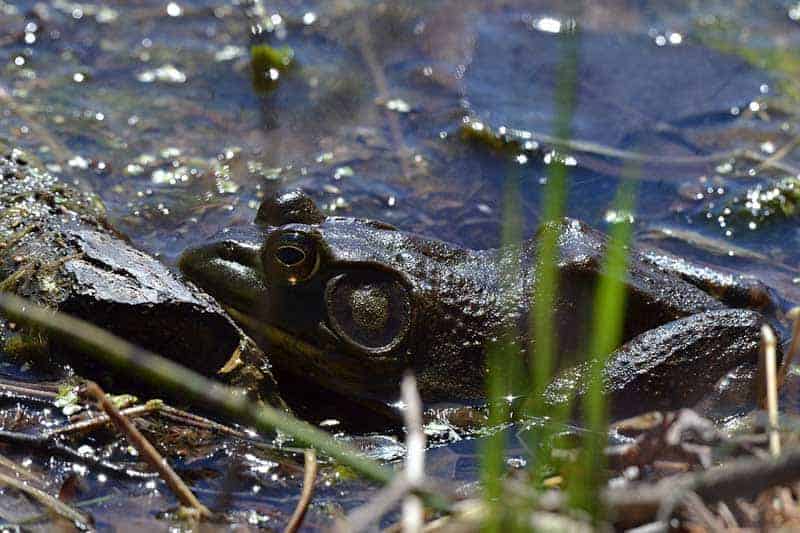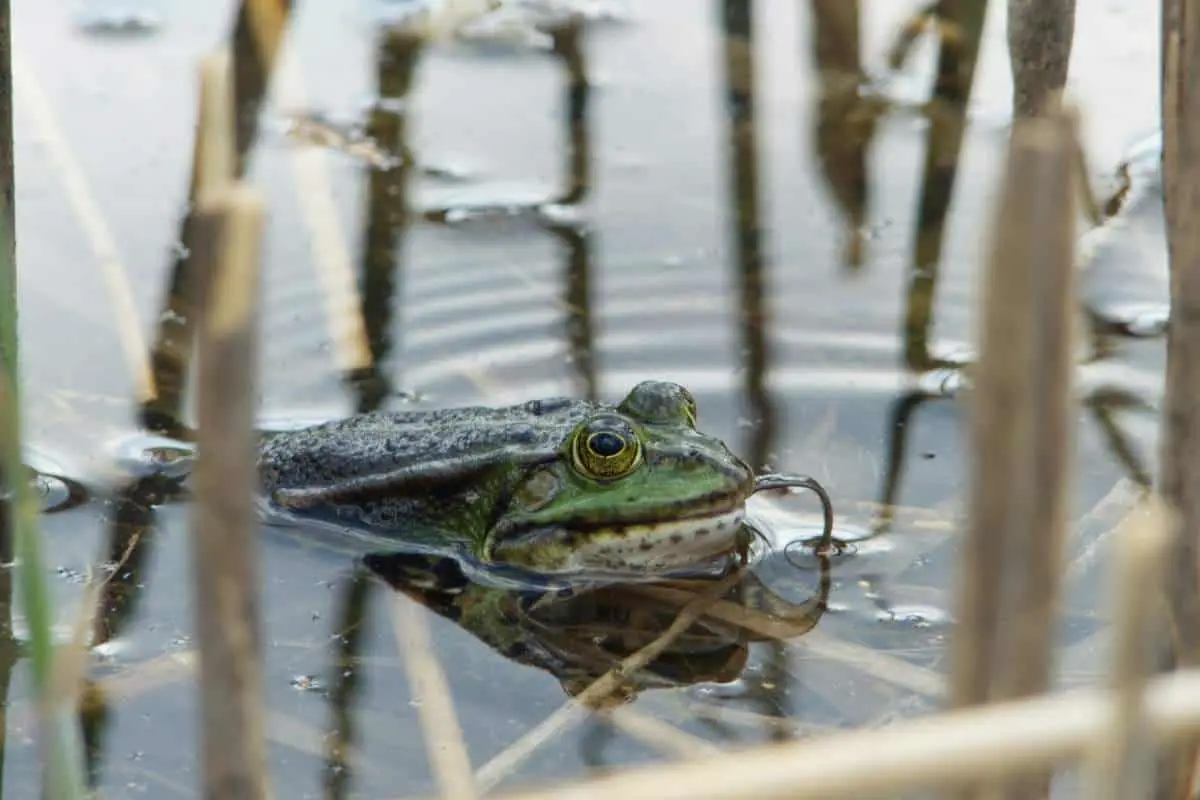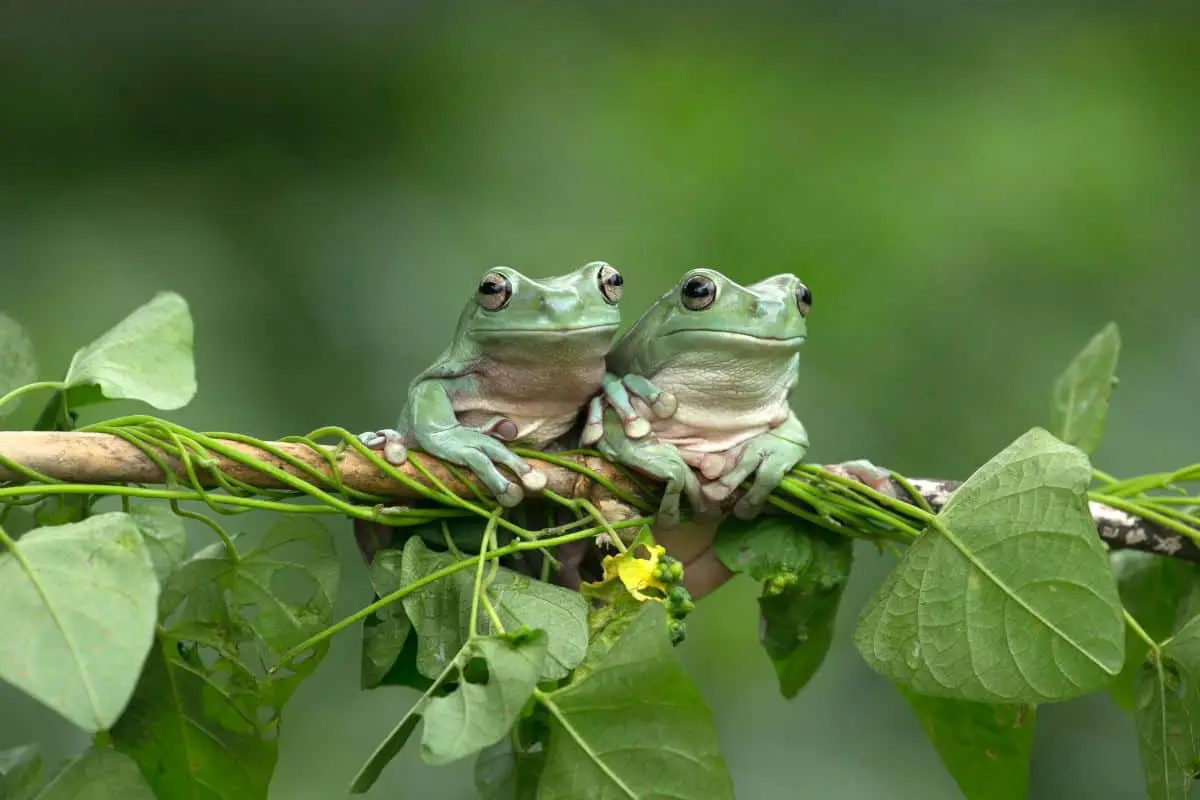When you think of frogs, you may imagine small animals that hop around and hide in the grass or leaves high in trees. However, some frog and toad species have grown significantly to become some of the biggest frogs in the world. Getting on this list of large frogs doesn’t mean they are fat. These frogs have grown all around big, almost to the size of small cats. In fact, the largest one on this list is over a foot and requires carrying it with two hands!
So what are these frog species? Where do they live? And how big do they get? Let’s find out.
Here are 15 of the biggest frogs in the world
Starting from the largest tree frog to the frog so big it’s named the Goliath, here is a list of the biggest frogs worldwide. Read on for information about these 15 frog species, including recorded size, fun facts, and pictures.
1. White-Lipped Tree Frog
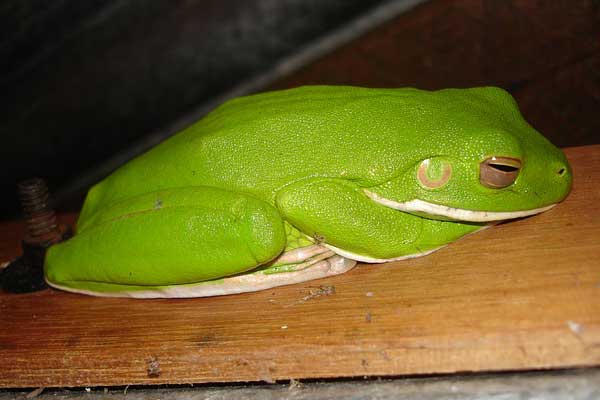
Scientific name: Litoria infrafrenata
Estimated adult size: 5.5. inches
Although the smallest frog on this list, the White-Lipped tree frog holds a Guinness World Record for being the largest tree frog. These frogs are also known as the Giant tree frog. Like all tree frogs, they enjoy climbing trees and have sticky pads on their feet to help them hang on to branches or wet leaves.
You can find them in the tropical rainforests of New Guinea, Indonesian islands, and northern Australia. However, they are also common pets in different countries around the world.
2. Pig Frog

Scientific name: Lithobates grylio
Estimated adult size: 6.5 inches
Adult pig frogs average up to 6.5 inches in length. They are green or gray with dark blotches and a sharp-pointed nose. You can find these frogs in open bodies of water, such as marshes and ponds. They are nocturnal and rarely go on land, except on rainy nights.
These frogs get their names from the distinct mating calls they make during the spring and summer. It’s a low, grunting sound similar to a pig.
3. Giant River Frog
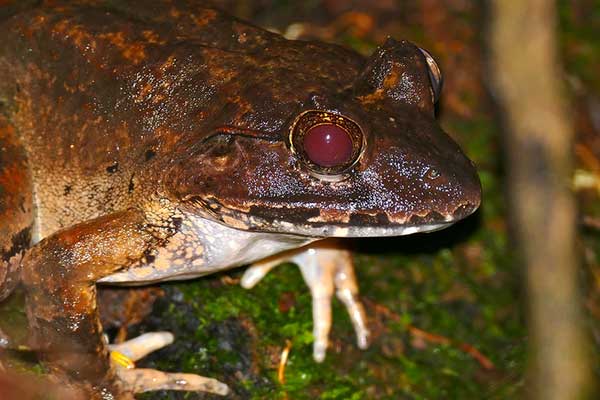
Scientific name: Limnonectes leporinus
Estimated adult size: 6.8 inches
The Giant river frog lives near streams on the forest floors of Borneo and parts of Malaysia and Indonesia, where locals often harvest them as food. The males can grow up to 6.8 inches, however, females are typically smaller. They are capable of catching large prey, including other frogs.
4. Indian Bullfrog
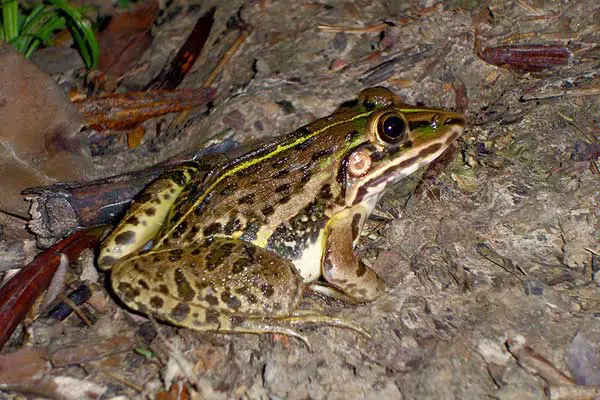
Scientific name: Hoplobatrachus tigerinus
Estimated adult size: 6.9 inches
The Indian bullfrog lives in countries beyond India, including Bangladesh, Myanmar, Nepal, and Afghanistan. They are a common food source for locals who enjoy eating frog legs. These frogs average 6.5 inches in length but can grow up to 6.9 inches. They are mostly olive-green or kaki. However, during the mating season, males turn bright yellow and have distinctive blue vocal sacks. It is believed the brighter the color, the more attractive the male is.
5. Argentine Horned Frog
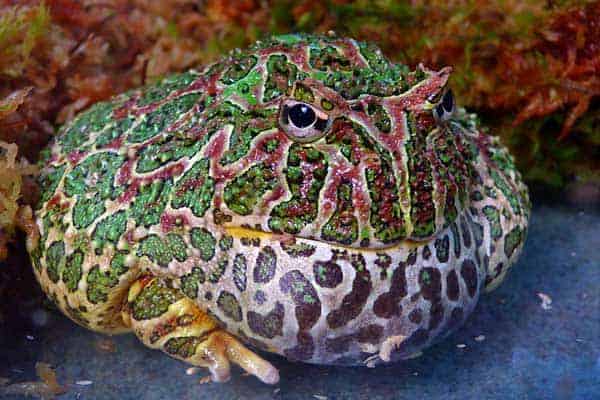
Scientific name: Ceratophrys ornata
Estimated adult size: 7 inches
The Argentine horned frog is also called the Ornate Pacman frog or Argentine wide-mouthed frog. It gets its name from, yes, its wide mouth and the horn-like shapes above its eyes. These frogs are large, round, stocky animals, with females growing larger than males to up to 7 inches in size.
You can find these frogs in Argentina, Brazil, and Uruguay grasslands as well as in the pet trade throughout the world. They prefer hiding under leaves or burrowing in the ground with their eyes protruding, waiting for prey. They will eat almost anything that moves and fits into their mouth.
6. Smoky Jungle Frog
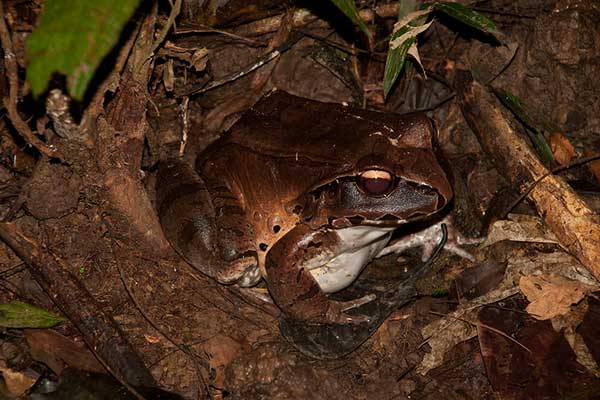
Scientific name: Leptodactylus pentadactylus
Estimated adult size: 7.1 inches
The Smokey jungle frog is known as the common bullfrog in countries it is native to, such as Colombia, Peru, Ecuador, and Brazil. They live anywhere near freshwater but preferably near swamps and marshes. The male Smokey jungle frogs are bigger than females, reaching up to 7.1 inches long. When you pick these frogs up, they will let out a high-pitched scream.
7. Surinam Horned Frog
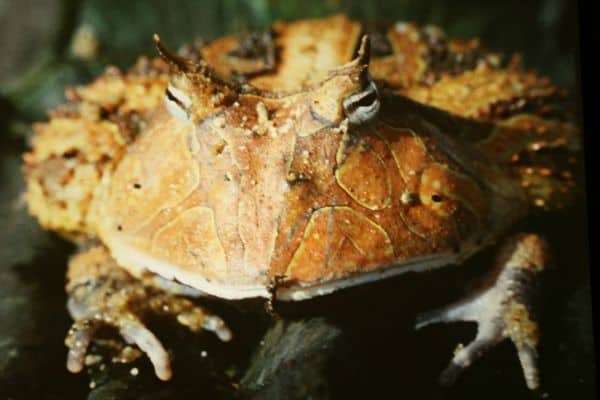
Scientific name: Ceratophrys cornuta
Estimated adult size: 7.9 inches
Another species of Pacman frogs, the Surinam horned frog is also known as the Amazonian horned frog due to the habitats you can find them in. They can grow bulkier and longer than other horned frogs and are relatively aggressive in the wild. These frogs are the few with teeth and are well-known predators, eating anything that moves by them.
8. American Bullfrog
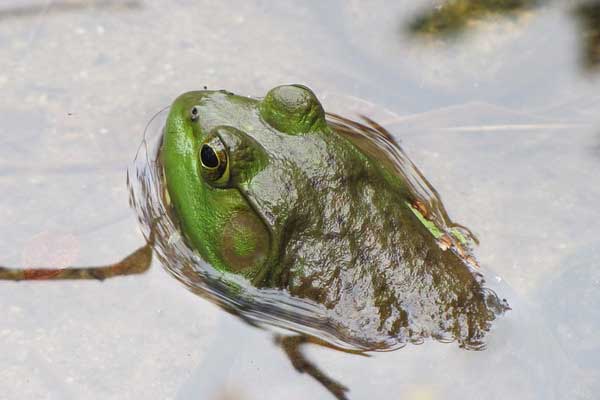
Scientific name: Rana catesbianus
Estimated adult size: 8 inches
The American Bullfrog, acknowledged as the biggest native frog found in North America and one of the big frog species globally, can be found in permanent water bodies in most of the eastern states to eastern Texas. Some also inhabit the west coast of the U.S. from central California up to Washington state.
These frogs are generally olive green, however, some have brown or gray molting. They will eat almost anything they can swallow, including turtles, other frogs, fish, rodents, small birds, bats, and baby ducks. Their name comes from their deep call that sounds like a bellowing bull.
9. Mountain Chicken Frog
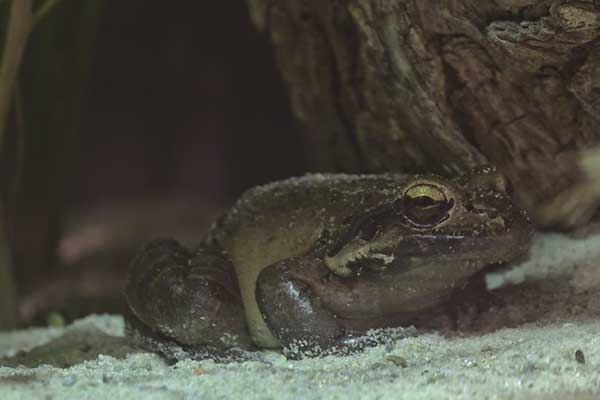
Scientific name: Leptodactylus fallax
Estimated adult size: 8.7 inches
Also known as the Giant Ditch frog, the Mountain Chicken frog is native to the Caribbean islands of Montserrat and Dominica. Growing up to 8.7 inches, they are the largest native Caribbean frog.
These frogs are a critically endangered species due to human activity and a fungal disease called chytridiomycosis that destroyed its population. Local communities hunted these frogs for food and, since they taste like chicken, gave them the name Mountain Chicken frog.
10. African Bullfrog
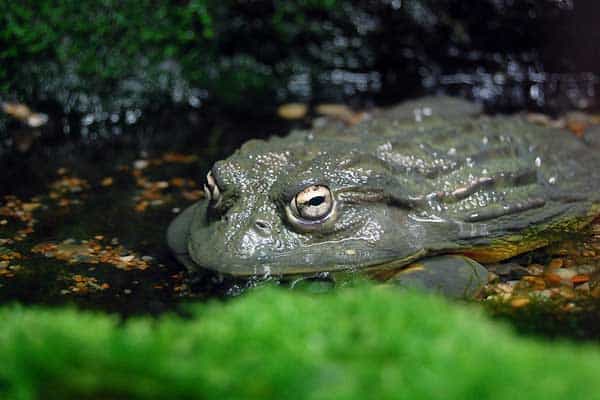
Scientific name: Pyxicephalus adspersus
Estimated adult size: 9 inches
As its name suggests, you can find this big frog in African countries, including Kenya, Namibia, Zimbabwe, Angola, and Botswana. They are also called the Pixie frog and live mostly in savanna habitats or near freshwater bodies, such as canals, lakes, and marshes.
Males can grow up to 9 inches in length and 4.4 pounds in weight. However, females are typically half this size. It is one of the few frogs with sharp teeth and will eat anything that crosses its path.
11. Cane Toad

Scientific name: Rhinella marina
Estimated adult size: 9.4 inches
The Cane toad is also known as the Marine toad and is native to Central and South America. However, they have become an invasive species in other countries, including North America and Australia. These toads will eat almost anything, including native frog species and pet food you leave out.
Although they need constant moisture to survive, they don’t drink water. Instead, Cane toads absorb moisture through the skin on their belly. Interestingly, they can also absorb too much water and die if forced to live in flooded areas.
12. Blyth’s River Frog
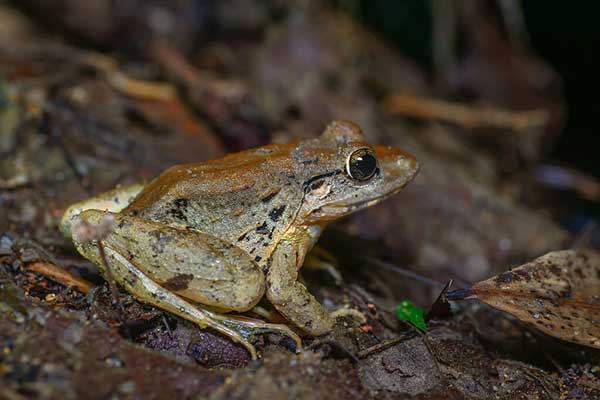
Scientific name: Limnonectes blythii
Estimated adult size: 10.2 inches
The Blyth’s river frog is the largest frog found in Asia and is commonly called the Giant frog. Females grow larger than males, reaching up to 10.2 inches compared to the male’s 4.9-inch length. You can find them in Myanmar, Malaysia, western Thailand, Singapore, and some Indonesian islands. However, due to human consumption and activities impacting their habitat, they are a near threatened species.
13. Lake Junin Frog
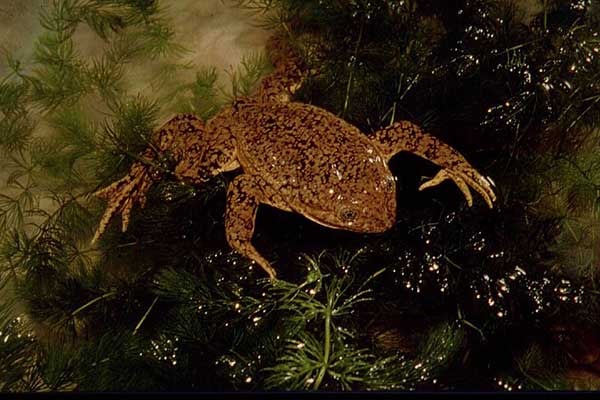
Scientific name: Telmatobius macrostomus
Estimated adult size: 12 inches
The Lake Junin frog found in Lake Junin in Peru can grow up to a foot long. They rarely leave the water and are one of the largest exclusively aquatic frogs in the world. In fact, their tadpoles are so big, they are often larger than adults of other frog species. Due to increased pollution of the lakes, the International Union for Conservation of Nature (IUCN) Red List currently lists them as Endangered.
14. Chilean Giant Frog
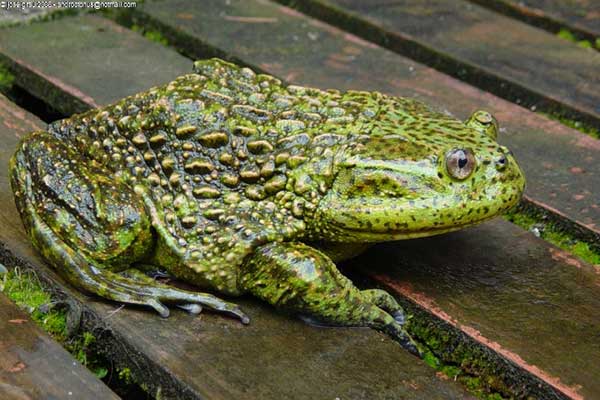
Scientific name: Calyptocephalella gayi
Estimated adult size: 12.5 inches
Certainly one of the biggest frogs in the world is the Chilean Giant Frog, also known as the Helmeted water toad or wide-mouthed toad. They’re found in Chile and are the biggest frogs in South America. They can weigh up to 2.9 pounds and grow to 12.5 inches in length. These frogs have broad heads and vary in color from yellow and light green to brown. They have aggressive behaviors, including an aggressive call directed to other Chilean Giant frogs or predators.
15. Goliath Frog
Scientific name: Conraua goliath
Estimated adult size: 12.6 inches
Now, turning our attention to one of the world’s biggest frogs and the largest frog species globallythe Goliath frog. You need both your hands to hold up these frogs that grow to lengths of 12.6 inches. Although they have similar diets to other frogs of insects, fish, and crustaceans, they will also eat other amphibians or even bats.
You can find these frogs in small areas of Equatorial Guinea and Cameroon. They typically build nests of gravel and rocks by riverbanks where the females will lay eggs. Due to habitat loss and population decline, the IUCN Red List currently lists them as an endangered species.
